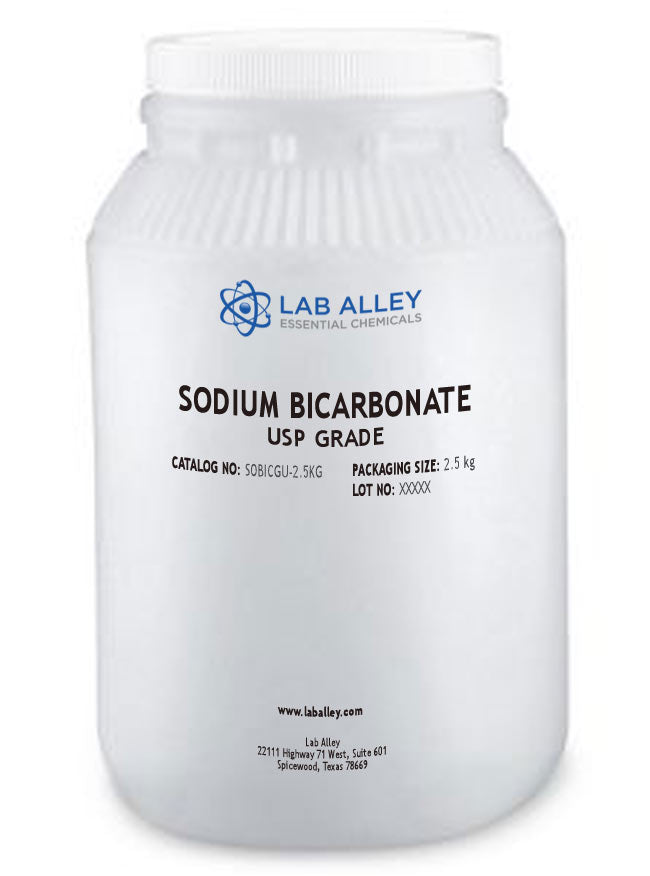How and Why to Use Sodium Bicarbonate for Neutralization
Sodium bicarbonate (NaHCO₃), commonly known as baking soda, is a trusted and widely used neutralizing agent. Its value lies in its ability to safely and effectively neutralize acids in a variety of settings - from household cleanups to large-scale industrial operations. As a mild base, sodium bicarbonate reacts with acids to form harmless byproducts like carbon dioxide, water, and a neutral salt, making it an excellent choice for controlled pH adjustments and chemical spill response.
Because of its non-toxic nature, low reactivity, and affordability, sodium bicarbonate has become a go-to solution for managing acidity safely, without the hazards associated with stronger bases or more volatile neutralizers.

In this article, we’ll explain:
1. Why Sodium Bicarbonate Is an Ideal Neutralizing Agent
2. How to Neutralize Acids with Sodium Bicarbonate
3. Key Safety Reminders
Why Sodium Bicarbonate Is an Ideal Neutralizing Agent
Whether you're managing an acid spill in a lab or adjusting the pH in a production tank, the neutralization process must be both effective and safe. Sodium bicarbonate offers a well-balanced approach that meets both objectives.
Safety in Spill Response
When sodium bicarbonate comes into contact with most acids - such as hydrochloric (HCl), sulfuric (H₂SO₄), or acetic acid - it reacts gently, producing carbon dioxide gas and water, along with the corresponding neutral salt. Unlike stronger alkalis (e.g., sodium hydroxide), this reaction typically doesn’t generate excessive heat or toxic fumes, making it safer for operators and more manageable in enclosed or sensitive environments.
This makes sodium bicarbonate particularly suitable for emergency spill cleanup, where unpredictable environments demand controlled reactivity and low risk.
Use in Laboratories and Industry
In laboratory and manufacturing settings, sodium bicarbonate is often used to adjust pH and halt acid-driven reactions at precise endpoints. It's an effective buffer in processes involving pharmaceuticals, cosmetics, and food production, where mild and food-safe compounds are preferred.
For example, a chemical process that requires acidic pH at one stage may use sodium bicarbonate to neutralize residual acid before progressing to the next step, preserving ingredient integrity and ensuring equipment safety.
Environmental Applications
In wastewater treatment, sodium bicarbonate plays a key role in neutralizing acidic discharges prior to environmental release. Acids discharged untreated into sewage or surface water systems can damage aquatic ecosystems and corrode infrastructure. Sodium bicarbonate provides a non-toxic, environmentally responsible method for stabilizing pH, aligning with EPA wastewater discharge regulations and environmental sustainability goals.
How to Neutralize Acids with Sodium Bicarbonate
When performing acid neutralization, even with a mild agent like sodium bicarbonate, following proper procedures is critical to prevent overreaction or incomplete treatment.
1. Identify the Acidic Material
Always confirm that you are dealing with an acidic substance before proceeding. Sodium bicarbonate is ineffective and inappropriate for neutralizing alkaline (basic) substances.
Common acids suitable for neutralization include:
- Hydrochloric acid (HCl)
- Sulfuric acid (H₂SO₄)
- Nitric acid (HNO₃)
- Acetic and citric acids
Avoid using sodium bicarbonate directly on strong oxidizing acids (e.g., perchloric acid) or in highly exothermic reactions unless under expert supervision.
2. Apply Sodium Bicarbonate Carefully
Sodium bicarbonate can be applied as a powder or dissolved in water, depending on the situation. When neutralizing a liquid spill, slowly add sodium bicarbonate while stirring. The reaction will begin to fizz as carbon dioxide gas is released, indicating neutralization is underway.
Best Practices:
- Add sodium bicarbonate gradually, never all at once.
- Stir continuously to ensure even dispersion.
- Work in a well-ventilated space to avoid CO₂ buildup.
3. Monitor the Reaction
To confirm complete neutralization, use pH test strips or a calibrated pH meter to measure the solution. The target endpoint is a neutral pH of approximately 7.
Continue adding sodium bicarbonate slowly until the pH stabilizes near this range. Avoid overcompensating, which can result in an unnecessarily alkaline solution.
4. Dispose of Neutralized Material Safely
Once neutralization is complete and bubbling has ceased, allow time for gas release to dissipate. The remaining solution is generally non-hazardous and may be disposed of according to local wastewater regulations. However, if the original acid was classified as hazardous, confirm with your Environmental Health & Safety (EHS) team or municipal authority whether special disposal procedures are required.
For large volumes or industrial spills, collect neutralized materials in labeled waste containers and coordinate disposal with an authorized chemical waste service.
Key Safety Reminders
Even though sodium bicarbonate is mild, handling neutralization reactions still requires standard laboratory or industrial precautions. Always wear:
- Chemical-resistant gloves (e.g., nitrile)
- Safety goggles or face shield
- Lab coat or protective apron
- Respirator or dust mask (if powder is used in bulk or in enclosed spaces)
In addition, always perform neutralizations in ventilated areas or under a fume hood, especially when working with large quantities or volatile acids.
Store sodium bicarbonate in airtight containers to prevent caking or contamination, and label clearly to avoid accidental misuse.
Conclusion
Sodium bicarbonate is a safe, practical, and effective neutralizing agent for a wide variety of acidic compounds. Its mild reactivity, low toxicity, and environmental friendliness make it a top choice in both emergency response and routine pH control procedures.
By using sodium bicarbonate appropriately - and following standard safety protocols - you can neutralize acids without generating hazardous byproducts or endangering personnel. Whether in a production facility, lab bench, or wastewater plant, sodium bicarbonate stands out as a dependable tool in the chemistry of safety and control.
Where to Buy Sodium Bicarbonate
As your trusted partner in chemical supply, Lab Alley is always striving to meet the growing demands of our customers. We want you to be able to access all of your chemical needs in one place, along with streamlined online ordering and fast shipping.
Due to popular demand from our valued clientele, Lab Alley's Sodium Bicarbonate is available in a range of purities and packaging options to suit various commercial, laboratory, and personal needs.




